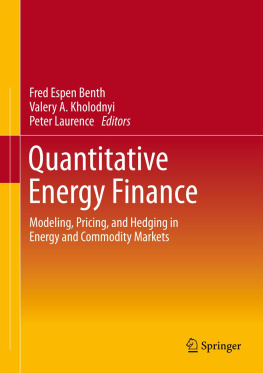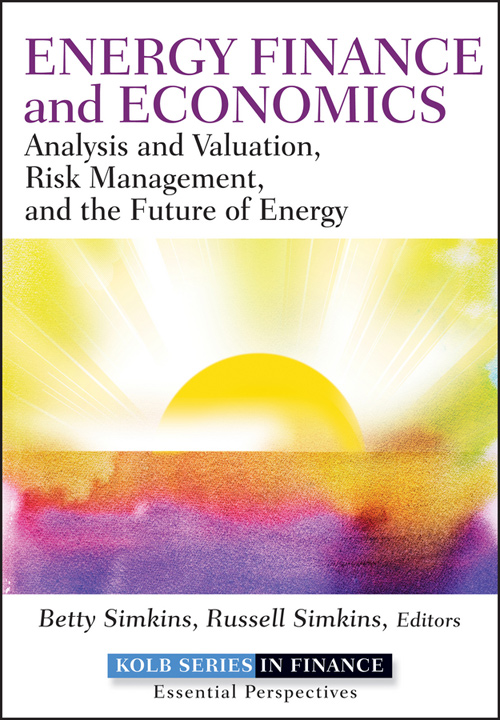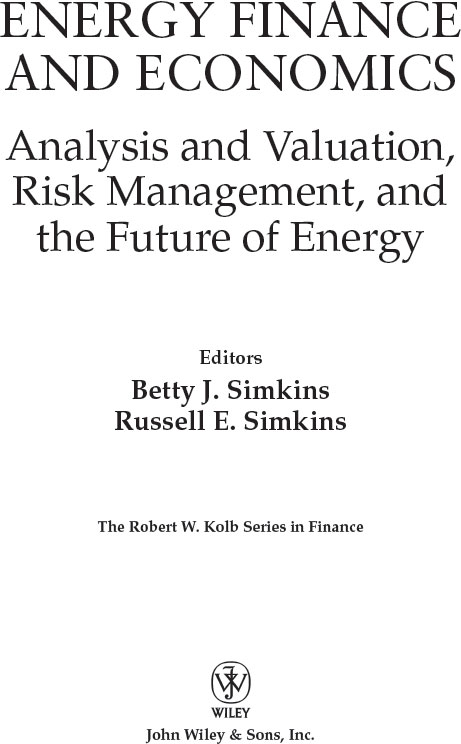The Robert W. Kolb Series in Finance provides a comprehensive view of the field of finance in all of its variety and complexity. It covers all major topics and specializations in finance, ranging from investments, to corporate finance, to financial institutions. Each volume is written or edited by a specialist (or specialists) in a particular area of finance and is intended for practicing finance professionals, graduate students, and advanced undergraduate students. The goal of each volume is to encapsulate the current state of knowledge in a particular area of finance so that the reader can quickly achieve a mastery of that discipline.
Please visit www.wiley.com/go/kolbseries to learn about recent and forthcoming titles in the Kolb Series.
Cover Design: Leiva-Sposato.
Cover Image: Ekely/iStockphoto.
Copyright 2013 by John Wiley & Sons, Inc. All rights reserved.
Published by John Wiley & Sons, Inc., Hoboken, New Jersey.
Published simultaneously in Canada.
No part of this publication may be reproduced, stored in a retrieval system, or transmitted in any form or by any means, electronic, mechanical, photocopying, recording, scanning, or otherwise, except as permitted under Section 107 or 108 of the 1976 United States Copyright Act, without either the prior written permission of the Publisher, or authorization through payment of the appropriate per-copy fee to the Copyright Clearance Center, Inc., 222 Rosewood Drive, Danvers, MA 01923, (978) 750-8400, fax (978) 646-8600, or on the Web at www.copyright.com . Requests to the Publisher for permission should be addressed to the Permissions Department, John Wiley & Sons, Inc., 111 River Street, Hoboken, NJ 07030, (201) 748-6011, fax (201) 748-6008, or online at http://www.wiley.com/go/permissions .
Limit of Liability/Disclaimer of Warranty: While the publisher and author have used their best efforts in preparing this book, they make no representations or warranties with respect to the accuracy or completeness of the contents of this book and specifically disclaim any implied warranties of merchantability or fitness for a particular purpose. No warranty may be created or extended by sales representatives or written sales materials. The advice and strategies contained herein may not be suitable for your situation. You should consult with a professional where appropriate. Neither the publisher nor author shall be liable for any loss of profit or any other commercial damages, including but not limited to special, incidental, consequential, or other damages.
For general information on our other products and services or for technical support, please contact our Customer Care Department within the United States at (800) 762-2974, outside the United States at (317) 572-3993 or fax (317) 572-4002.
Wiley also publishes its books in a variety of electronic formats. Some content that appears in print may not be available in electronic books. For more information about Wiley products, visit our web site at www.wiley.com .
Library of Congress Cataloging-in-Publication Data:
Energy finance and economics : analysis and valuation, risk management, and the future of energy / Betty J. Simkins and Russell E. Simkins, editors.
p. cm. (The Robert W. Kolb series in finance)
Includes index.
ISBN 978-1-118-01712-8 (cloth); ISBN 978-1-118-22190-7 (ebk); ISBN 978-1-118-26056-2 (ebk); ISBN 978-1-118-23598-0 (ebk)
1. Energy industriesFinance. 2. Energy policy. 3. Renewable natural resources. I. Simkins, Betty J., 1957- II. Simkins, RussellE.
HD9502.A2E54385 2013
333.79dc23
2012034409
To our family:
Luke and his future bride, Stephanie;
Walt and his wife, Lauren;
our daughter, Susan
and her long-time boyfriend, Jason;
our other daughter, April.
Acknowledgments
We appreciate the contributions of the authors in this volume, who shared their valuable insights into the complex topic of energy finance and economics. Without them, this book would not have been possible. We also thank the Natural Gas and Energy Association of Oklahoma (NGEAO) for inspiring us to publish a book about energy and economics. We would like to also thank Emilie Herman, Tiffany Charbonier, Kevin Commins, and Melissa Lopez at John Wiley & Sons for their patience and hard work in the publication of this book. In addition, we appreciate Bob Kolb for his encouragement and contributions to this volume of the Kolb Series in Finance .
CHAPTER 1
An Introduction to Energy Finance and Economics
BETTY J. SIMKINS
Williams Companies Professor of Business and Professor of Finance, Oklahoma State University
RUSSELL E. SIMKINS
Manager of Proposal Services, College of Engineering, Architecture, and Technology, Oklahoma State University
He who loves practice without theory is like the sailor who boards ship without a rudder and compass and never knows where he may be cast.
Leonardo da Vinci, 14521519
An investment in knowledge always pays the best interest.
Benjamin Franklin
SO WHY A BOOK ON ENERGY FINANCE AND ECONOMICS?
The purpose of this book is to provide the latest information and insights into the finance and economics of energy, based on contributions written by academics and practitioners who are experts in various areas of energy finance and economics. We strive to bridge the theorypractice gap, as the quote from Leonardo da Vinci emphasizes, between the scientific and technological foundations of energy and the real-world applications in the fields of finance and economics. Theory and practice go hand in hand, so that students and practitioners can better understand the what, why, and how of energy finance and economics to aid them in performing at a higher level no matter where they may be cast. Likewise, investing in knowledge will lead to success for anyone working in the energy industry or a related area, as the Benjamin Franklin quote suggests.
The book is intended to be useful to both educators and executives interested in the broad topic of energy finance and economics, but it will be relevant to energy users in general. To our knowledge, this is the first book to provide this breadth of coverage on this topic. We strive to provide accurate and nonbiased information by experts in each of the subject areas. Surveys, an example of which is described in Chapter 7, have shown that, in general, the public is very misinformed about what influences the prices of energy in our society. This is indeed unfortunate because learning the basics is fundamental to both citizens and politicians who make important decisions regarding energy. There is a desperate need for more education on energy, and we believe this book is a step in the right direction.
What do we mean by energy finance and economics? By this, we mean the finance and economics of energy involving the principles and tools necessary to conduct sound decision making and analysis. This also includes a broad understanding of the complex topics related to energy for a solid foundation. By linking both the economics and finance of energy in the book, we are striving to break down the silo mentality that sometimes separates two fields, especially in education, so that the knowledge flows freely between these two areas.
This leads to the learning objectives of the book, which are:
To gain basic knowledge and key concepts of energy supply and demand, terminology, industry structure, and related concepts.
To analyze geopolitics and world energy use and learn about the outlook for the U.S. and global energy needs over the next 30 years and beyond.












